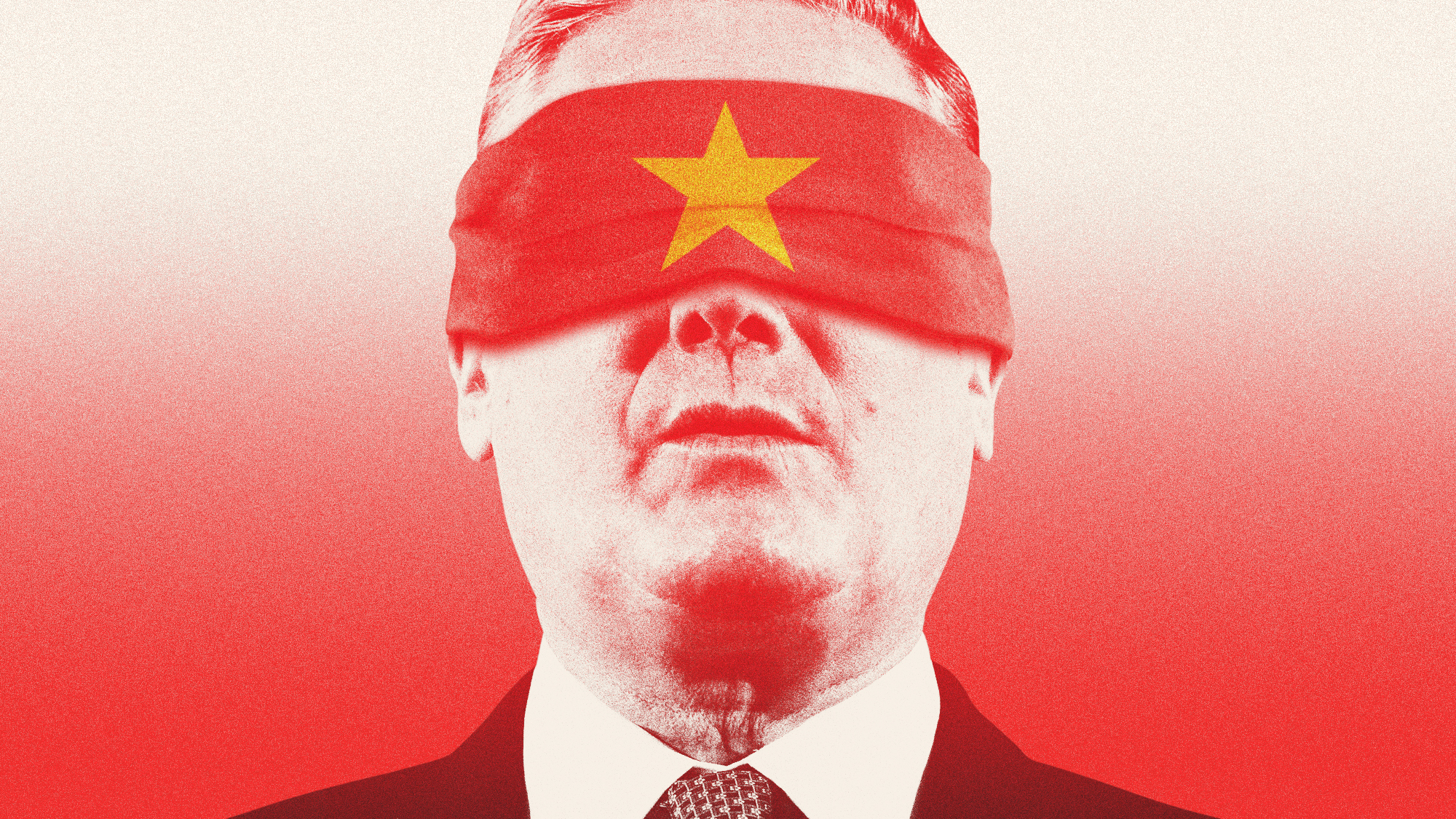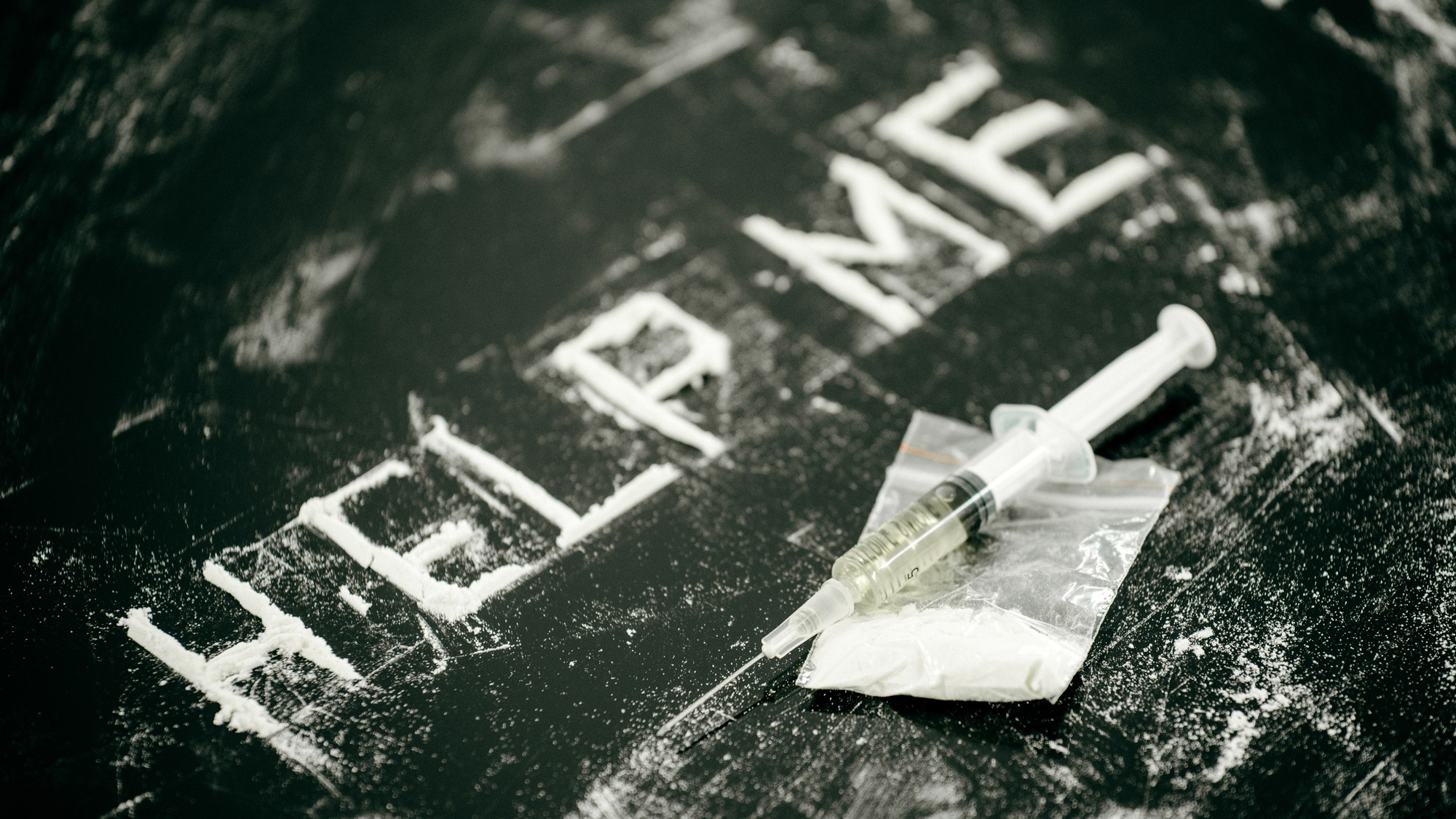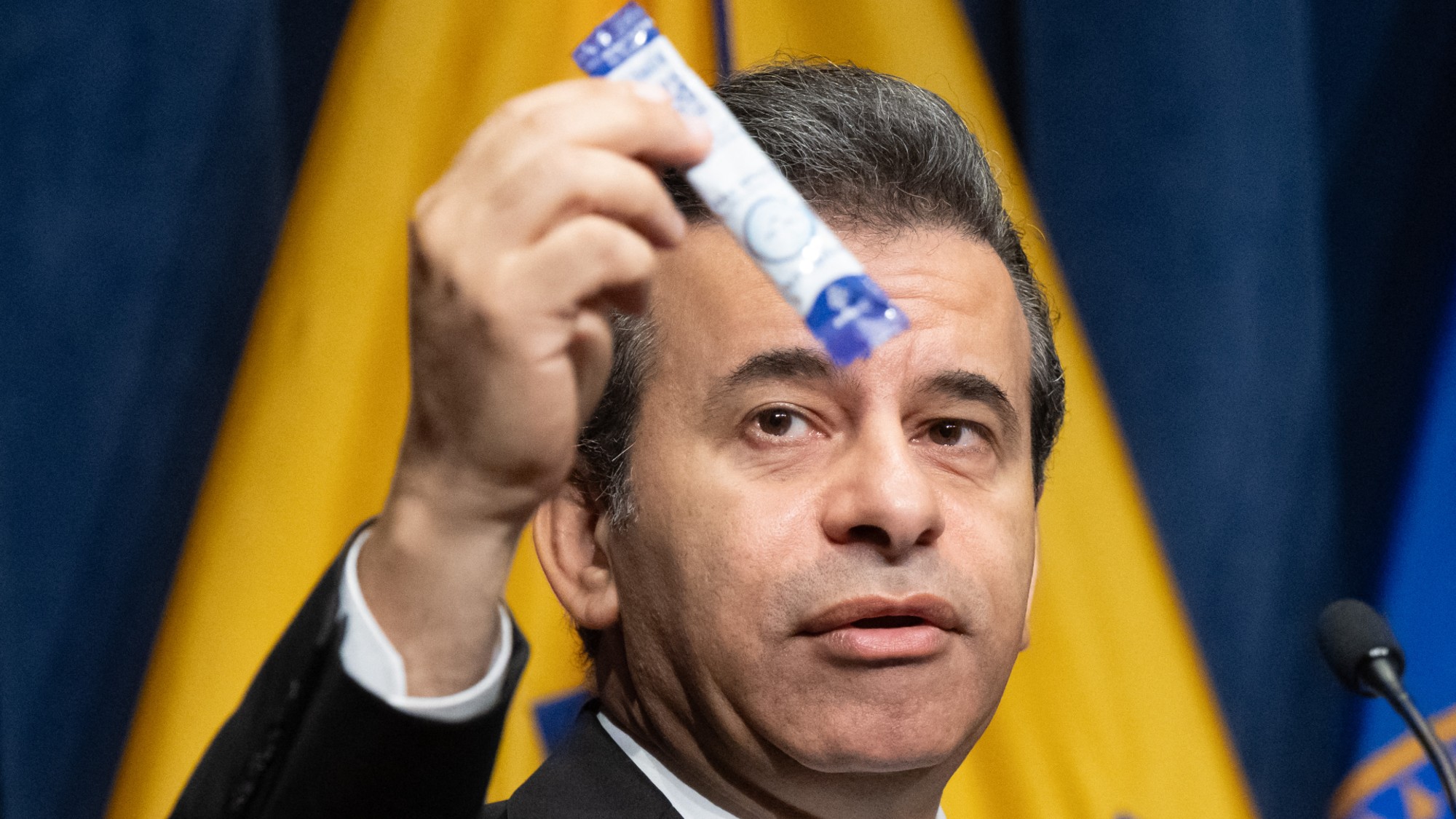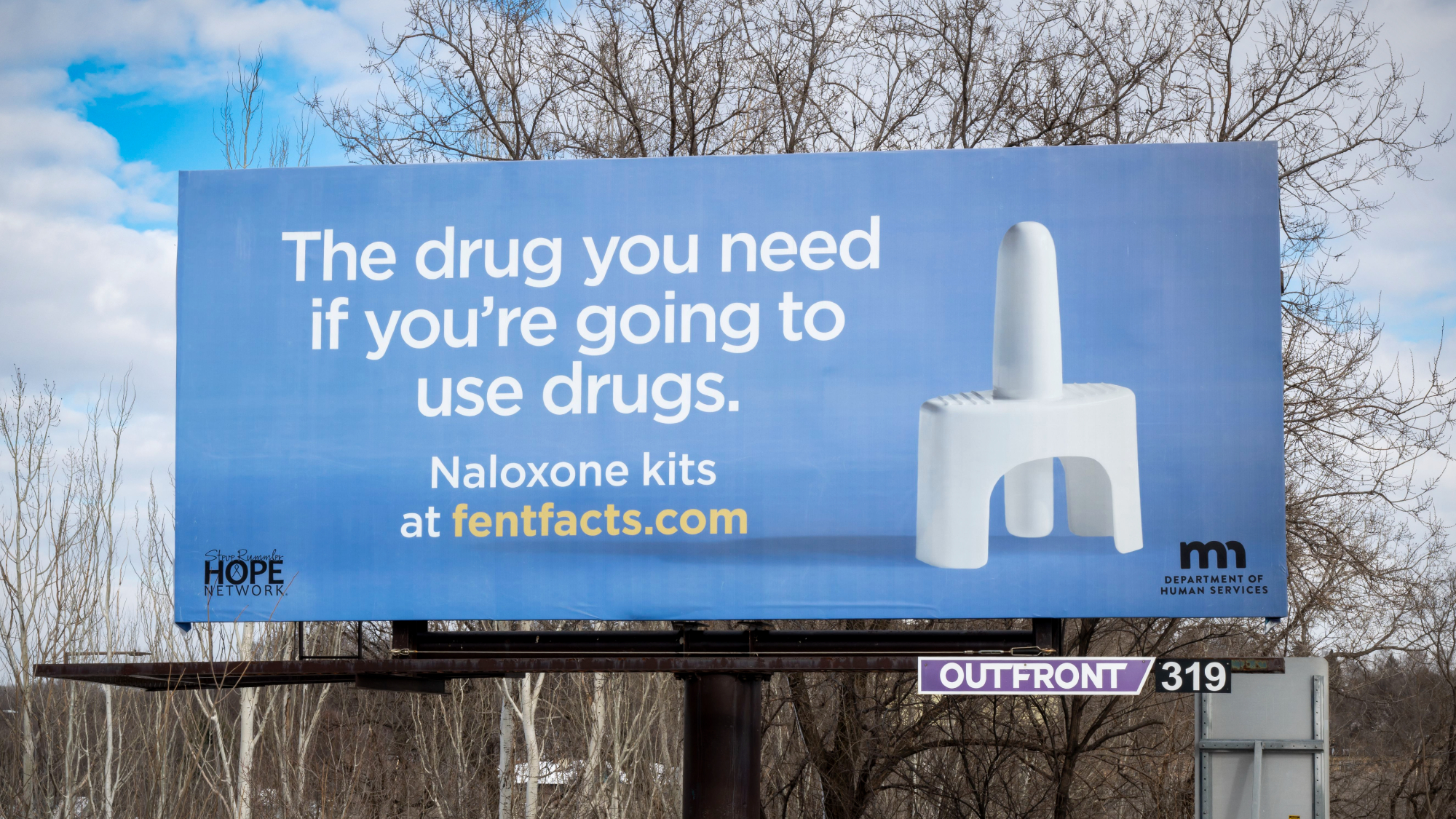Tranq dope: the new horror drug on US streets
A dangerous mixture of animal sedative and fentanyl has flooded Philadelphia and beyond

An animal sedative being sold illegally by drug dealers across the US is putting users at risk of serious flesh wounds and deadly overdoses.
The drug, called xylazine, is an FDA-approved animal sedative but it is increasingly being mixed with substances such as heroin and fentanyl in a toxic mixture known colloquially as “tranq dope”.
The US is already in the grip of an opioid crisis, in which “more than 700,000 people a year” are dying from by fentanyl overdoses, said Sky News. But doctors and public health officials are alarmed at the rapid spread of tranq dope, which is becoming increasingly prevalent in overdose deaths and can cause horrific skin wounds on the bodies of users.
The Week
Escape your echo chamber. Get the facts behind the news, plus analysis from multiple perspectives.

Sign up for The Week's Free Newsletters
From our morning news briefing to a weekly Good News Newsletter, get the best of The Week delivered directly to your inbox.
From our morning news briefing to a weekly Good News Newsletter, get the best of The Week delivered directly to your inbox.
Why is ‘tranq dope’ so dangerous?
The presence of xylazine alongside other illicit substances comes with serious risks to users. The drug “induces a blackout stupor for hours, rendering users vulnerable to rape and robbery”, said The New York Times. And as xylazine “is a sedative and not an opioid”, it resists standard opioid overdose reversal treatments such as naloxone, said the paper.
Reversing a fentanyl overdose where xylazine is involved can also prove extremely difficult. While naloxone will block or reverse fentanyl’s effects on brain receptors, it can’t rouse a victim sedated with xylazine, explained the paper. It means “desperate rescuers” will administer a second or third dose of the treatment, putting the user at risk of an extremely painful withdrawal.
Users of the drug frequently develop serious flesh wounds and decaying skin tissue called eschar, which can become infected and lead to the amputation of limbs. “The tranq dope literally eats your flesh,” Brooke Peder, a 38-year-old tattoo artist living in Philadelphia who has had a leg amputated due to an infected tranq wound, told the paper. “It’s self-destruction at its finest.”
And doctors are “perplexed” by the wounds caused by xylazine, which can be “so extreme that they initially resemble chemical burns” and frequently do not appear at injection sites, but on shins and forearms. Caring for the wounds can prove all but impossible for tranq users living on the streets, leaving many at risk of infection.
A free daily email with the biggest news stories of the day – and the best features from TheWeek.com
How prevalent is it?
The drug has flooded the US city of Philadelphia – it was found in 90% of “dope samples tested in Philly in 2021”, according to a recent study. And it is being increasingly found in fatal heroin or fentanyl overdoses in the city.
According to the journal Injury Prevention, researchers found that the sedative was present in fewer than 2% of fatal overdose cases between 2010 and 2015, but by 2019 it was being detected in 31% of fatal heroin or fentanyl overdoses in the city. The most significant jump occurred between 2018 and 2019 when the detection rate increased from 18% of fatal heroin overdoses to 31% just a year later.
Although Philadelphia is the epicentre of the current crisis, xylazine is spreading across the US, said Vice News. The site said it had access to exclusive data that showed the drug had spread “to at least 39 states”.
A further study published in June found xylazine in the drug supply in 36 states and the District of Columbia. But xylazine’s “true prevalence is unknown”, said The New York Times, as hospitals and medical examiners do not routinely test for the drug.
Where did it come from?
Xylazine is used in veterinary medicine as a sedative. It’s not clear when xylazine first appeared in the illicit drug trade across the US, but some reports suggest its use may have begun in Puerto Rico in the early 2000s where it was known as “Anestesia de Caballo” or horse anaesthetic, according to Substance Use Philadelphia.
Some epidemiologists have theorised that it may have become popularised as a cheap and easy opioid filler during the pandemic, with bottles of the veterinary drug “purchased online with a veterinary prescription or diverted from veterinary supply chains”, said The New York Times.
What is being done to combat the crisis?
Public health experts are “still trying to get a handle on the drug”, said the Smithsonian Magazine, which is complicated by a lack of research on xylazine’s effects on humans. Experts still don’t know why the drug causes such serious flesh wounds and they are also trying to figure out how best to treat overdoses where xylazine is present.
But the increasing prevalence of the drug is creating “a more dangerous and threatening drug landscape for users to navigate”, said CNN. Some harm reduction groups in the US adopted the use of infrared or mass spectrometry to check drugs, which are “tools traditionally used by forensic teams”, but many are still learning about the drug through word of mouth.
Health experts are concerned the drug will fuel the US’s opioid epidemic, already exacerbated by synthetic opioids such as fentanyl. “It seems like xylazine is following fentanyl’s footsteps,” said Joseph Friedman, a researcher at the University of California, Los Angeles. “Just like fentanyl did 10 years earlier, everywhere it lands, it’s growing exponentially.”
He said that he hoped lessons could be learnt from the “missed opportunities” to respond effectively to fentanyl, so that authorities can tackle the increasing presence of xylazine in the US’s illicit drug trade.
Sorcha Bradley is a writer at The Week and a regular on “The Week Unwrapped” podcast. She worked at The Week magazine for a year and a half before taking up her current role with the digital team, where she mostly covers UK current affairs and politics. Before joining The Week, Sorcha worked at slow-news start-up Tortoise Media. She has also written for Sky News, The Sunday Times, the London Evening Standard and Grazia magazine, among other publications. She has a master’s in newspaper journalism from City, University of London, where she specialised in political journalism.
-
 Political cartoons for December 23
Political cartoons for December 23Cartoons Tuesday's political cartoons include an eye on CBS, cracking the middle class, and Donald Trump's name on everything
-
 Women carrying Christmas
Women carrying ChristmasTalking Point As the Christmas frenzy ramps up, many mums feel the pressure of ‘keeping the whole sleigh on the road’
-
 Is Keir Starmer being hoodwinked by China?
Is Keir Starmer being hoodwinked by China?Today's Big Question PM’s attempt to separate politics and security from trade and business is ‘naïve’
-
 A fentanyl vaccine may be on the horizon
A fentanyl vaccine may be on the horizonUnder the radar Taking a serious jab at the opioid epidemic
-
 Nitazene is quietly increasing opioid deaths
Nitazene is quietly increasing opioid deathsThe explainer The drug is usually consumed accidentally
-
 Can TrumpRx really lower drug prices?
Can TrumpRx really lower drug prices?Today’s Big Question Pfizer’s deal with Trump sent drugmaker stocks higher
-
 The UK’s opioid crisis: why the stats don’t add up
The UK’s opioid crisis: why the stats don’t add upThe Explainer A new report has revealed that the UK’s total of opioid-related deaths could be much greater than official figures show
-
 Why the FDA wants to restrict kratom-related products
Why the FDA wants to restrict kratom-related productsIn the Spotlight The compound is currently sold across the United States
-
 US overdose deaths plunged 27% last year
US overdose deaths plunged 27% last yearspeed read Drug overdose still 'remains the leading cause of death for Americans aged 18-44,' said the CDC
-
 Trump seeks to cut drug prices via executive order
Trump seeks to cut drug prices via executive orderspeed read The president's order tells pharmaceutical companies to lower prescription drug prices, but it will likely be thrown out by the courts
-
 FDA approves painkiller said to thwart addiction
FDA approves painkiller said to thwart addictionSpeed Read Suzetrigine, being sold as Journavx, is the first new pharmaceutical pain treatment approved by the FDA in 20 years